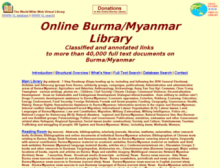Resource information
...the customary rights of communities and
Indigenous Peoples to forests, rangelands, and wetlands are often not
written down or shown on government maps, but they are a fundamental
reality. They cover more than 50 percent of the world’s land surface, yet
new research by RRI in 2015 showed that just 10 percent of the world’s
land is legally recognized as community-owned.2
This means that governments formally recognize communities’
ownership rights to less than 20 percent of the land they have
historically owned.
This huge gap means that vast areas of the world remain open to
contest. Disputes over land ownership are a major driver of conflict:
the unclear status of customary rights has played a role in all but three
of the 30-plus armed conflicts in Africa between 1990 and 2009.3
Even though the constitutions of many countries
recognize customary law, and recognize customary
rights in statutory law, implementation is often
weak or nonexistent.,,



